 Bridgestone golf might not have the notoriety or the reputation of a big company like Titleist or Nike, but they are quickly making significant inroads into the big business of golf balls.
Bridgestone golf might not have the notoriety or the reputation of a big company like Titleist or Nike, but they are quickly making significant inroads into the big business of golf balls.
Bridgestone’s dedication to innovation has put them at the forefront of technological advancements, and they are often the first to come out with new ideas in the golf ball industry. Although they aren’t always at the top of the “Buzz” column, they consistently put out quality golf balls that are poised to compete with new offerings from the likes of TaylorMade, Nike, and Titleist.
Bridgestone currently offers two main line of golf ball: the Tour B330 line, and the “e” line, in addition to their xFIXx golf ball. The Tour B330 line consists of four different golf balls, with each one fitting a different type of golfer. The Tour B330 line further breaks down into the regular B330 group, and the B330-RX group, which offer golfers of all swing speeds a tour-quality urethane-covered golf ball that promises unmatched performance. Bridgestone is the truly only manufacturer to cater to golfers of all levels.
Technology and Design
The oldest and arguably most important piece of design behind all of the Tour B330 series is the 330 Seamless Cover Technology. SCT is designed to reduce drag during initial elevation, and hold the ball in the air for a longer time. The seamless design covers the entire golf ball, which results in pinpoint accuracy and added distance. The design of the ball’s cover also is made to encourage a penetrating ball flight that is less affected by the wind. This year’s Tour B330 golf balls also feature a new deconstructed cover that features a new dimple pattern and a softer urethane material.
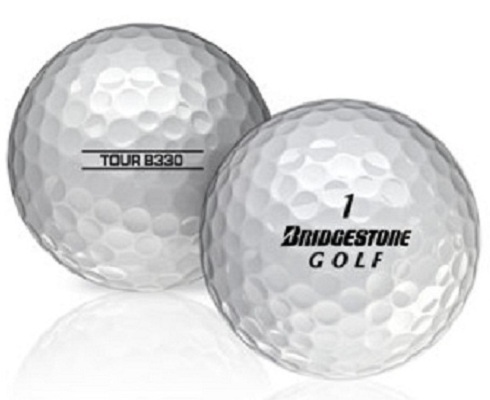
The Tour B330 and Tour B330-S also feature Bridgestone’s new RD10 resin mantle layers. The RD10 material is built to increase short game spin while simultaneously increasing distance. In fact, 2010 PGA Tour money leader Matt Kuchar played much of last year with a prototype version of this gall ball. The RD10 design also features Gradational Hardness Layering, which aids in increased power transfer between layers and better distance. Now let’s take a look in to how Bridgestone’s B330 series fits the needs of every golfer.
Tour B330 and Tour B330-S
The Tour B330 and the Tour B330-S are made for professional level swing speeds, specifically for those who swing the driver over 105 MPH. Both golf balls have four layers, including a Gradational Core, an inner and outer RD10 resin mantle, and a seamless cover. Between the B330 and the B330-S, the B330 is the distance ball, similar to the Titleist ProV1x, the Srixon Z-Star X, the Nike 20XI-X, and the Callaway Tour i(z). The B330 is the spinier golf ball, in line with the Titleist ProV1, the Srixon Z-Star, the Nike 20XI-S, and the Callaway Tour i(s).
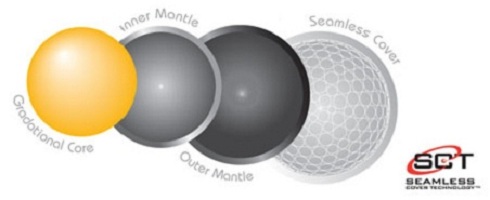
Tour B330-RX and Tour B330-RXS
The Tour B330-RX and the Tour B330-RXS models are made for those with swings speeds under 105 MPH, which, given that the average golfer’s swing speed is only about 85 MPH, includes most people. Both models are three-piece balls, with a Gradational Core, a mantle later, and seamless cover. The B330-RX and the B330-RXS are really in a field of their own. While many golf ball companies offer golf balls made for slightly-less-than-professional swing speeds (Nike One Vapor, Titleist NXT, Taylor Made Burner Tour, Callaway HX Diablo Tour), they all have ionomer (the generic name for Surlyn) covers, and sacrifice spin and performance for durability and price.
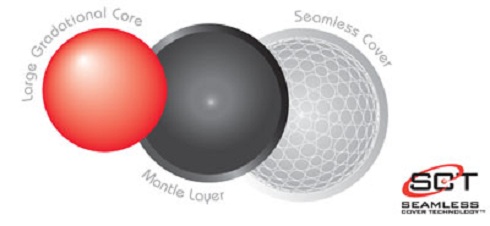
In a move that I am very excited about, Bridgestone also offers the Tour B300-RX in “Optic Yellow,” which is supposed to be much easier to track against the sky, and more visible lying in the grass. You might catch a little heat from your buddies for playing a yellow golf ball, but when you stop that ball on a dime from 200 yards out with your brightly colored B330-RX, they’ll shut up.
Distance and Spin
I’ve long struggled to find the golf ball that fit me best, as I find the tradeoff between greenside spin and distance a tough one to make. Recently it was Prov1 vs. ProV1X, before that it was Taylor Made TP Red vs. Taylor Made TP Black, and before that Nike One Black vs. Nike One Platinum. Until last year, that is, when the Taylor Made Penta TP found a permanent spot in my bag. For me it had the greenside abilities of a high-spin ball, and the distance of a low-spin ball. Taylor Made actually removing the decision of picking between two balls seemed to help my game and gave me a nice peace of mind. Thanks to Bridgestone, however, I’ve learned that “decision” doesn’t have to mean “tradeoff.”
The first box I cracked open was the plain, old Tour B330. These are the low-spin, distance balls for the fast swingers. If I had to guess which of the four balls would be best for me, I would pick these. I tend to hit down on the ball excessively, which is great with my irons, but it robs my driver of a lot of distance. Because of that, I get significantly more distance with lower spin balls, like the ProV1X. Going in I was expecting this to be the longest of the four balls for me, and man was I right. The Tour B330 was just taking off on me with my driver and my irons. In fact, I gained about half of a club over my usual Penta, and with my driver I was hammering the ball past my usual spots on the fairways.
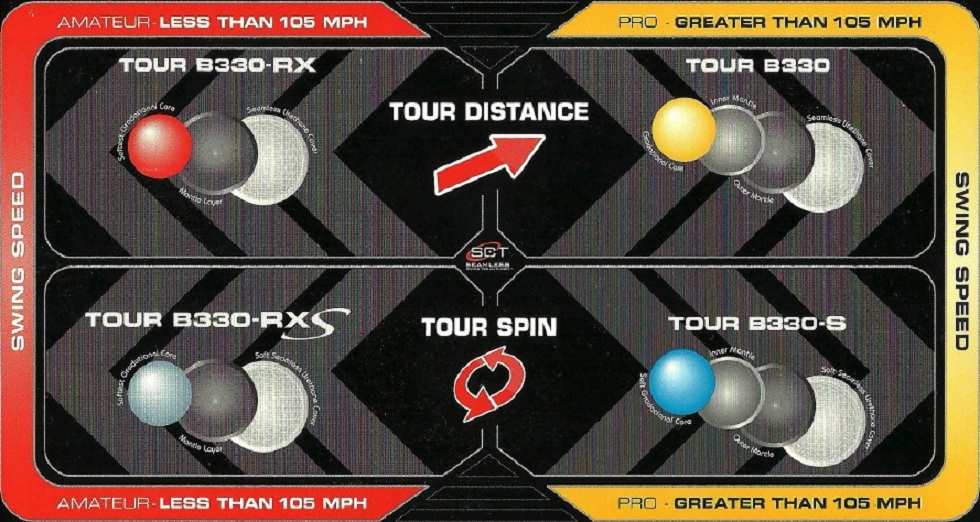
As expected, the green-grabbing power of the Tour B330-S (which I tried out next) is far superior. I have to say though; I was slightly disappointed with the spin with both golf balls. Don’t get me wrong, I could get them to check up nicely and on pitch shots, but they don’t have quite the same spin as some other balls on the market. I don’t want to overstate this though- if the ProV1’s spin is a 100, the Tour B330-S is a 98. I doubt most people would notice a difference, but in my experience, there is one. On the plus side though, the B330-S balls are also crazy long. Not only is the Tour B330 longer than the other balls out there, the Tour B330-S is too. The B330-S, a high-spin ball, was longer for me than most low-spin balls. As it should be, the B330-S is shorter than the B330, but, man, both are long.
Next I tried out the B330-RX. The RX and the RXS are both designed for golfers with swing speeds under 105 MPH, and my swing speed is usually just over 105, so it wasn’t a stretch for me to test out these golf balls. According to Bridgestone, the B330-RX are B330-RXS are supposed to be much softer than their tour-level counterparts. Distance numbers will vary as well, based on which ball fits you best.
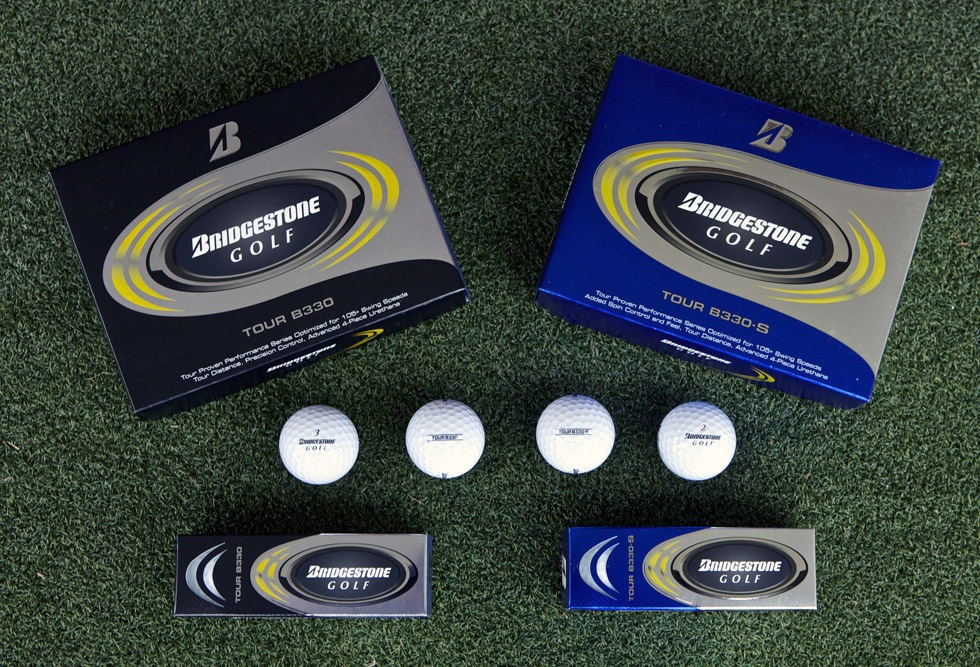
For me, the B330-RX and the B330-RXS didn’t fit as well as the tour-level balls, they were just a bit shorter. Not a lot, about 10 yards with the driver and half of a club with my irons, but enough to notice. Since the B330 and the B330-S were longer than most balls on the market, the B330-RX and B330-RXS were on par with the other golf balls out there. Take that with a grain of salt though, because the B330-RX and B330-RXS are designed for lower swing speeds. For people with an average swing speed, the RX and RXS should be longer than the B330 and B330S and most other urethane balls on the market. Basically, if you find the right ball for you among these four, one or two of them will be long, probably longer than anything else you are going to find.
The B330-RX and B330-RXS do also fall a tiny bit short in the iron spin category, like the B330 and B330-S. Similar to the tour-level balls, it’s not a huge difference, but it is one that I think some people will notice. Luckily, these balls are meant for slower swingers, who aren’t likely to expect to suck golf balls back on the green anyway. In fact, given the fact that their competition is mostly ionomer-covered golf balls, the people that these balls fit best will probably find them to be loaded with spin.
Short Game and Putting
With golf balls, there are three aspects to feel: with the irons and woods, with the wedges, and with the putter. Off the long clubs, if you stick to the balls that fit your swing speed, you’ll get great feel. When you start to stray is where you run into some trouble, though that is to be expected. If you swing fast enough for the B330 and B330-S, the B330-RX or B330-RXS are just going to feel mushy, and if you should be playing the B330-RX or B330-RXS, the B330 and B330-S are going to feel a bit to firm for you, especially the B330. But if you play the correct golf ball, the feeling of perfectly matched steel on urethane is pure heaven.
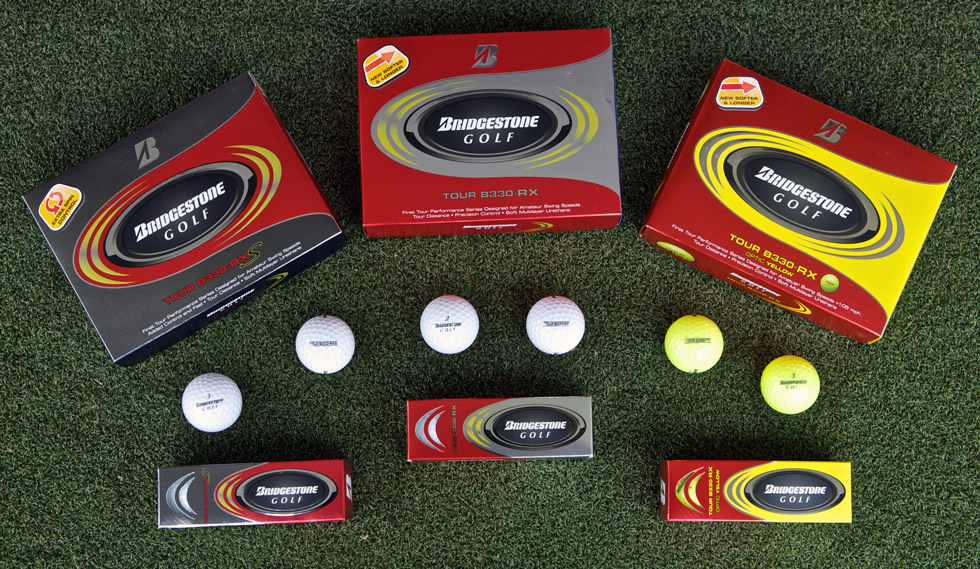
Around the greens, the story is similar. For better players, those who hit down on the ball and make crisp contact, you are going to want to stick with the tour-level balls. But, if you sometimes struggle around the greens to make contact on the middle of the face, the RX and RXS will be right up your alley feel-wise. In both cases, however, the “S” model is softer than its counterpart. All four of the models feel good (it’s hard to find a urethane ball that you can’t say that about), but to find the one that feel best is all about finding the ball that fits you best.
As I mentioned earlier, these balls are slightly lacking in the spin category. To put it in a simple way, the B330 and the B330-RX on a simple, flat pitch shot are both “hop, hop, hop, stop,” while the B330-S and the B330-RXS are both “hop, and stop.” The non-“S” models are both easier to hit bump and runs with, but if you like to fly the ball to the hole and are asking it to stop on a dime, the “S” models are right for you. But, like I mentioned above, because these are competing with ionomer-covered golf balls, most people who these balls fit will be very impressed with how much they spin.
Because they are all three- or four-piece balls with urethane covers, all of them perform admirably with the flatstick. They all have that soft, smooth feel that we have all come to expect with urethane, and the clicking sound that comes with ionomer is completely absent. While that is no big deal for the B330 and B330-S, because the RX and the RXS compete almost exclusively with ionomer-covered balls, they have a huge advantage.
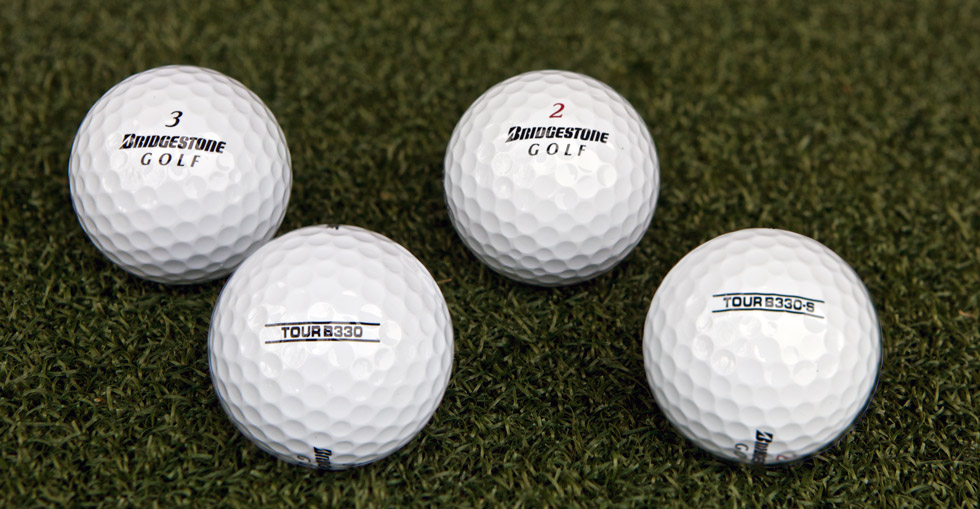
I do have one gripe though. I like to draw a black Sharpie line through the alignment line on the side of the golf ball. Unfortunately, the “Tour B330” logo on the side of the golf ball is a little bulky, and a Sharpie line wasn’t quite thick enough to cover up the entire logo. In addition, many people like the arrows that some companies put next to the logo, but these golf balls are completely devoid of said arrows. A small issue indeed, but one that some people will notice.
Durability
To be honest, I don’t expect a whole lot when it comes to durability. If I’m playing in a tournament, I’ll make sure to buy a fresh batch of golf balls and switch them out every few holes, but if I’m just playing for fun, which is most of the time, a little scuff mark doesn’t really get to me. That said, everyone wants to get the most out of their purchases, and the more durable a golf ball is, the longer it lasts before it must be relegated to the shag-bag. For me, ProV1s and Pentas last about a half-dozen holes before they’re scuffed them up enough that it’s worth it to take them out of play.
I should preface this by saying that I play irons that comply to the new USGA Condition of Competition that limits grooves, but I was quite impressed by just how long these golf balls lasted. I’ve played quite a few rounds and made several visits to the practice green since receiving these golf balls, and though I’ve been diligent in swapping them out to keep them fresh, I haven’t had to take a single ball out of play due to excessive scuffing.
Color
The B330-RX are available in Optic Yellow, and it was my pleasure to get to try some of those as well. I have pretty decent eyesight, so seeing the ball land in the fairway (or OB, or in the water) is not my problem, but sometimes tracking the ball against the sky, especially when it’s either really sunny or completely overcast, can be tough.
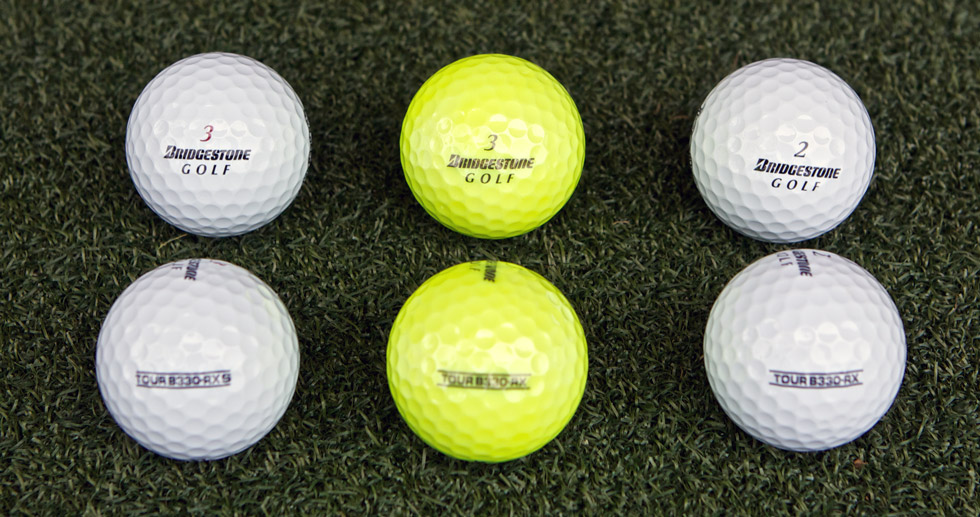
This is where these balls excel. To be honest, it’s not a stretch to buy the B330-RX just for the color. It surprised me, that’s for sure. I grew up whacking brightly colored yellow and orange Top Flites around my backyard and hacking it around on the range, so I had some good mojo going into it, but man was I surprised at how much I liked the yellow. I could see the ball against the backdrop of a grey and rainy sky and most importantly, I could see it in the rough. Yellow doesn’t seem like a brilliant color to pick out of deep grass, it is closer to green than white is after all, but you’d be surprised. I have to admit that there might be a bit of an issue with in the fall here in the northeastern U.S. (lots of yellow leaves), but in the summer the yellow balls are just so much faster to find. And, here’s the great thing, you will never play the wrong ball again (unless colored golf balls really take off).
I might not go so far as to play these in tournaments or with a business partner I am trying to impress (though it would be an interesting conversation starter), but by myself or paired up with some random golfers at a muni these will see some major time. My only wish is that Bridgestone offers the rest of their models in Optic Yellow. I’m sure Bridgestone is playing to the expected consumers of the yellow balls, but it would be nice to see them bring the advantages of Optic Yellow to the rest of their line.
Conclusion
No matter what type of game you play, Bridgestone has a golf ball for you. Serious players looking to compete at the highest level should check out the Tour B330 or Tour B330-S. Average swingers looking to still get a little grab around the green qualify for the Tour B330-RX or Tour B330-RXS. Need a little help finding your golf balls in the tall grass? The Tour B330-RX in Optic Yellow is you best bet. If you prefer to play pitch shots that fly to the hole and stop on a dime, the Tour B330-S or Tour B330-RXS should be right up you alley. Need to play bump and run shots around the greens? The Tour B330 or Tour B330-RX will give you the flexibility to do so. They really have everyone covered.
I’m not someone who switches equipment everyday (I still play an r7 SuperQuad driver), so for me to make such a quick jump to a new golf ball is really saying something. If you like to have the utmost control over your golf game, premium balls are the way to go. While for some people they might be too expensive (it doesn’t make a whole lot of sense to play a $4 ball if you are going to lose two balls per hole), everyone else owes it to themselves to find the golf ball that is right for you.

I picked up 12 dozen 330 rx off of Bidding for Good site. Less than $30 per dozen. I have played Pro V’s for a while. My swing speed has fallen off a little and my driver speed is 100-102. I find the rx very much same as Pro V. I play to single digit but more based on great short game vs pure striking. So while a harder longer ball might help my distance I need a little spin around greens as I miss so many. Bridgestone has very active ball testing at shows and ranges. The article has me thinking I need to try out the regular tour 330. Thank You Great article.
I play yellow 330 RX because I hit it so far I cannot see where it landed!!???
Jokes aside. A very good ball and a very comparable with Srixon Z Star XV. I think, the colour is better with Bridgestone.
I went out last night and picked up a dozen of the Tour B330’s and the E 6’s. I haven’t used them on the course yet however, I’ve done some putting with both the B330’s and the E 6’s I’ve noticed off the putter that the E 6’s have a softer feel much more preferred for my stroke style. Lastly, correct me if my information is inaccurate but I have learned that Titleist has stolen a lot of design information off bridgestone’s balls.
Cant wait to use the B330’s and the E 6’s on the course—further reviews/comments are to be made 🙂
I may need to revisit the Bridgestone path. I tried their balls last year. In fact, I’ve tried pretty much every tour ball apart from the Callaway and the Penta. I got a dozen (6 Tour S, 6 RXS because of their pricepoint) and to be honest, I dropped a little in distance across the board. Side by side, they were consistently shorter than the ProV1x, and I lost about half a club on my irons which on our small greens is the difference between being on or being short. After trying everything (both Z-Stars, Nike etc), I always come back to the ProV1x. Yeah, its a little more expensive, but only $10 or so more a box. WHen I run out, I might try the Bridgys again. My driver speed fluctuates though. If Im swinging good on the day, its usually just over 105, but can be down around the 98-100 mark. HOw do I know this, I’ve spent plenty of time on trackman.
I’ve read several of your golf ball reviews and tend to agree with your assessments. So you actually did replace the Pro V1x in your bag with the Penta? I also like the Penta, and picked up a few dozen (buy 2 get 1 free). I’ve been going back and forth b/w them and the V1x. I like variety.
I agree westcosting89….to me the E6 is the softest feeling ball off the putter (disclosure – I have not tried the B330 RxS ball). Strange sense it is a Surlyn cover…..
With SS around 105 mph, I was just at the S-RX border. I decided to take both to the course to make up my mind.
Driving, the RX was a little bit longer, 5 yds at most. I carry ~240 yds. Irons, the RX was also a little longer, but not more than 2 yds on an 8-iron.
For chipping: no noticeable difference.
Where I saw the most difference was in feel:
– in irons, the S felt a little harder, I was getting the mushy feel mentionned in the revieview with the RX, not the S
– in putting, I much preferred the RX. Difficult to put words on it, but it feels softer and I think this encourages a very sweet pass through the ball – as it does on irons.
So in the end, I went for the RX.
I looked into this article in interest as i want to try the rx this season and see if i can get a bit less sidespin and more distance, but still keep the decent amt of spin i produce.
….however….OP does not fit the RX line and is more across the line onto the premium tour models…
…soooo…i would have liked two authors for a change…i know each article is always one person..but having the op test the higher spin balls…while the other did the slower swing. otherwise reading an opinion on rx line from someone at the higher swing speed threshold is moot. would have loved to hear lower swing speed comments on its results. hopefully more sand trappers will comment to help me.
The B330-S is shorter than the “Costco” Callaway Hex Warbird by 10 yards. Bridgestone told me that the B330-S is called a “spin” ball, and you should expect a 10 yard or more loss of distance off the tee.
Up to the 8i they seem to perform about the same distance-wise.
However, the B330-S works much better for 105mph swing speed which promted me to call Bridgestone.
They are great balls, and they seem to do the job pretty well.
I will probably look into the RX and the S-RX balls when I purchase some balls.
I have a dozen 330S and a dozen Titleist Vx1s in my bag. The spin on the 330S is unquestionably the best I’ve ever seen. A solid strike from 40 yards with my LW checks up like the thing was dropped from a helicopter. I’ll sacrifice 5 yards off the tee for short game performance like that. So reliable around the greens.